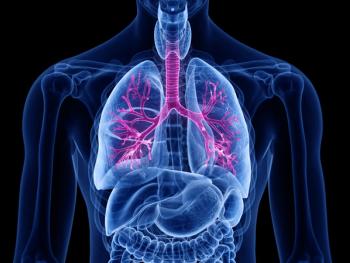
First Oral Antiviral Treatment For COVID-19 Gets FDA Approval
More than 11.6 million treatment courses of the medication have been prescribed in the U.S. to date.
While Pfizer’s Paxlovid (nirmatrelvir tablets and ritonavir tablets), an oral antiviral medication to treat COVID-19, has been available since December 2021 under FDA’s Emergency Use Authorization (EUA), the FDA granted full approval on May 25.
Paxlovid is the first oral antiviral treatment for mild-to-moderate COVID-19 in adults who are at high risk for progression to severe COVID-19, including hospitalization or death, Pfizer
The U.S. government will continue to oversee the distribution of Paxlovid, and U.S. residents eligible for the medication will continue to receive the medicine at no charge, according to Pfizer.
“Today’s approval demonstrates that Paxlovid has met the agency’s rigorous standards for safety and effectiveness, and that it remains an important treatment option for people at high risk for progression to severe COVID-19, including those with prior immunity,”
While “great advancements” have been made in the fight against COVID-19, the virus remains a “present and unpredictable concern,” said Albert Bourla, chairman and CEO of Pfizer. “This is especially true for the hundreds of millions of American adults who are age 50 or older or are otherwise at high risk for progression to severe illness, even if symptoms are initially mild.”
FDA’s approval is based on the totality of scientific evidence shared by Pfizer, including safety and efficacy data from the EPIC clinical development program. This included results from the Phase 2/3 EPIC-HR study, which enrolled unvaccinated, non-hospitalized adults, aged 18 years and older, with confirmed COVID-19 who were at increased risk of progressing to severe disease.
The data showed an 86% reduction in risk of COVID-19-related hospitalization or death from any cause through Day 28 in patients who initiated treatment with Paxlovid within five days of symptoms onset compared to placebo, Pfizer said.
Additionally, a secondary endpoint of the Phase 2/3 EPIC-SR study showed a numerical reduction in COVID-19-related hospitalizations or death from any cause through Day 28 in a sub-group of non-hospitalized adults, aged 18 years and older, with confirmed COVID-19 who had at least one risk factor for progression to severe disease and who were fully vaccinated.
Plus, recent real-world studies of Paxlovid support the efficacy conclusions from Pfizer’s EPIC clinical program, providing additional data on the use of Paxlovid in the post-authorization setting of Omicron sub-lineage predominance and where high levels of pre-existing immunity occur, according to Pfizer. “Those studies have shown that Paxlovid is effective among both vaccinated and unvaccinated high-risk patients,” the company said.
The FDA said in March that more than 1,500 lives could be saved and 13,000 hospitalizations could be avoided each week with Paxlovid use in eligible patients, according to Pfizer.
The research arm of Epic, the electronic health record company headquartered in Verona, Wisconsin,
The differences were larger among those 65 and older. But the Epic research also showed a difference in the 50-64 age group. For example, there were 27 hospitalizations (0.13%) and zero deaths among 20,407 people in that age who were treated with Paxlovid and who had been fully vaccinated and had had a booster.
Among the 38,689 adults in the fully vaccinated, boosted group who were not treated with Paxlovid there were 143 hospitalizations (0.37%) and seven deaths (.02%). That works out to a hospitalization rate that is almost three times higher among those not treated with Paxlovid compared with those that were.
Meanwhile, Pfizer continues to gather pediatric data from its ongoing clinical trial, EPIC-Peds, and intends to submit a supplemental New Drug Application (sNDA) to support the FDA approval of Paxlovid in children at a future date.
A spokesperson at Pfizer said at this time, the U.S. government will continue to oversee the distribution of Paxlovid, and U.S. residents eligible for Paxlovid will continue to receive the medicine at no charge (other administrative fees may apply). Pfizer anticipates making Paxlovid commercially available later this year, the timing of which is dependent on a number of factors, including existing USG supply of Paxlovid.
"We look forward to continuing to work with payers in order to help facilitate timely, equitable access to Paxlovid for eligible U.S. patients," the spokesperson said. "Ultimately, out-of-pocket costs to patients will vary and are determined by insurers.
FDA said Paxlovid’s
Newsletter
Pharmacy practice is always changing. Stay ahead of the curve with the Drug Topics newsletter and get the latest drug information, industry trends, and patient care tips.











































































































































































































